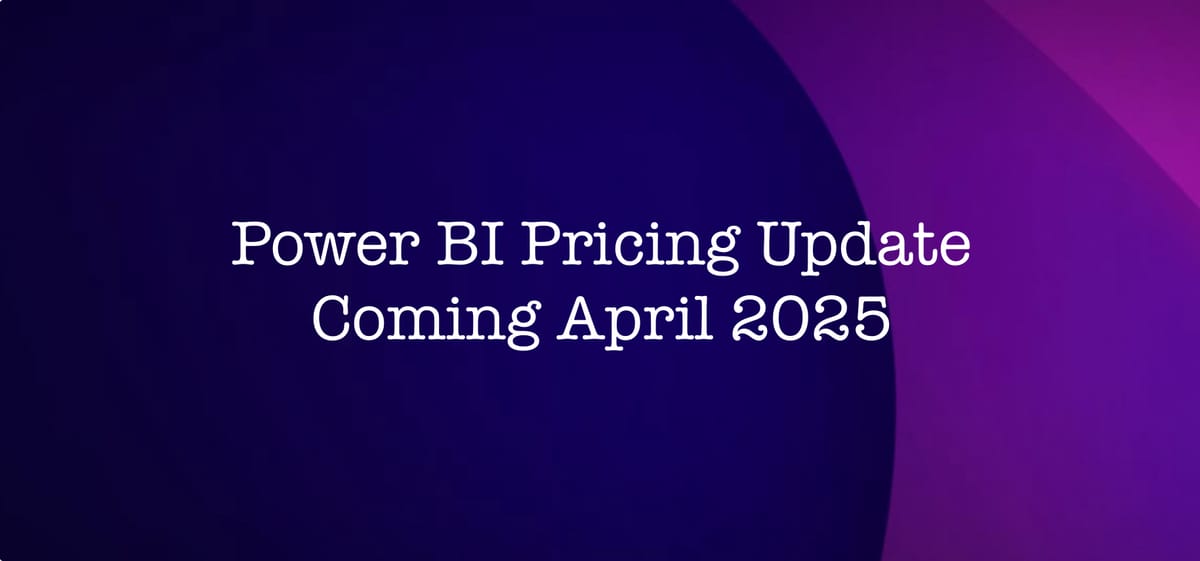Power BI Pricing Update

Context
Yesterday, November 12th, Microsoft announced changes to the Power BI licensing that represents a 20-40% (license dependent) increase per user license. It’s worth mentioning that this is the first increase since July 2015, more than 9 years ago. From April 1st 2025, pro licensing will increase from $10 to $14 per user per month and premium per user licensing from $20 to $24 per user per month.
More details are covered in the Microsoft blog post.
What’s not affected
Though this is naturally going to affect a large number of users, I think it’s most likely to impact small and medium sized corporates and those not currently or planning to use Fabric. This is because some elements will remain unaffected as the licensing changes are specific to the per user licensing not under enterprise agreements. Not changing, is:
- Fabric F SKU pricing
- Embedded pricing (under EM and F SKUs)
- E5 licensing - this still includes a power BI pro license with no increase in cost
- PPU add on licensing for E5
- Non-profit licensing (currently priced lower than enterprise or personal licenses)
Scenarios & suggestions
- Excluded / unaffected: If you’re currently E5 licensed, licensed through a non-profit, or utilising included in pricing viewer licensing through an F64 Fabric capacity, there’s nothing to worry about
- Utilising Fabric, but below F64: the new licensing adjusts the tipping point for where the jump to F64 makes sense for the viewer licensing being included in capacity cost. With reserved pricing, this was previously around 250 users if you are utilising an F32 capacity with reserved pricing and pro licensed users, now it’s more like 180. The crossover point is the difference in cost from your current SKU to F64 divided by the per user per month license cost (e.g. 268 for F16)
- Utilising fabric but not embedding: more often than not, Power BI users are licensed for accessing reports via the Power BI service. However, with Fabric F SKUs, you can make the most of embedding for your organisation and organisational apps to facilitate consumption of reports without needing to access Power BI service and therefore reducing the potential licensing requirements for viewers
- Utilising Power BI but not yet Fabric: Well, both of the above two points are still worth considering. In fact, I think the lower SKUs (F2 and F4) could be paid for if you’re able to utilise embedding for your org instead of Power BI licenses for report viewers for as few as 11 (F2, reserved pricing) users. This could be a great reason to consider Fabric if you’re not already
As for everyone else, unfortunately there isn’t much of an option beyond preparing for the increased cost sooner than later and communicating it to decision makers. That said, I would hazard a guess that the cost to transition organisational reporting would likely outweigh any benefit, and given the previous history I would hope this is not likely to happen again for some time.